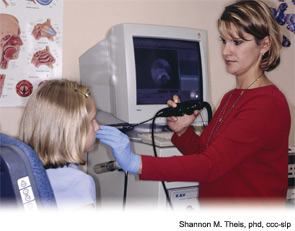Although voice disorders in children are not new, recognition of the need to address and treat these disorders in many children is increasing. Experts say this is fueled by two recent developments: improvements in diagnostic technology tailored to better accommodate the smaller anatomy of children and greater awareness that voice disorders in childhood may have a larger and more long-lasting impact on a child’s life than previously recognized.
The increased understanding is also leading to more physicians completing fellowships in both pediatric and adult laryngology. Although the number of otolaryngologists who have completed such double fellowships is small—about 10, according to Albert Merati, MD, professor and chief of the laryngology service at the University of Washington Medical Center in Seattle—Dr. Merati believes these double fellowships are the future.
“Pediatric voice care has been neglected for decades, or at least lost behind truly pressing issues like pediatric airway surgery,” Dr. Merati said. “If we knew for sure what the impact of having a disordered voice had on kids, that would help us motivate and educate families. We need the research to show us how to answer the question: Tell me why it matters?”
Increased Recognition
Voice disturbances in children are not uncommon. According to statistics cited by the American Speech-Language-Hearing Association (ASHA), hoarseness occurs in 6 to 23 percent of school-aged children. Although they were once thought to be a condition that could be outgrown, there is increased recognition that vocal disturbances in children can create lifelong communication and other problems if left untreated.
“In the past, practitioners have downplayed pediatric voice disorders because they believed that children would grow out of it, or if they would just stop yelling on the playground the hoarseness would go away,” said Shannon M. Theis, PhD, CCC-SLP, clinical assistant professor of communicative disorders at the University of Wisconsin School of Medicine and Public Health–Voice and Swallowing Clinics in Madison, Wis. “Now, we understand that pediatric voice disorders can have a significant effect on a child’s school performance, self-esteem and communicative effectiveness.”
According to Kittie Verdolini Abbott, PhD, professor of communication science and disorders at the University of Pittsburgh, who has helped treat children with voice disorders, some of the difficulties these children face include not being called on in class, being excluded from play, missing school due to voice therapy and behaving more aggressively.
A 2008 study found that chronic dysphonia in children negatively affected their lives by inviting negative attention and limiting their participation in important events (J Voice. 22(2):197-209).
Improved Diagnosis
Vocal disorders often refer to hoarseness, which is the most common symptom. According to Gayle Woodson, MD, professor and chair in the division of otolaryngology-head and neck surgery at Southern Illinois University School of Medicine in Springfield, Ill., hoarseness may be present at birth because of a congenital problem such as vocal fold paralysis or a laryngeal web but often presents later due to acquired vocal fold lesions or laryngitis.

Leave a Reply